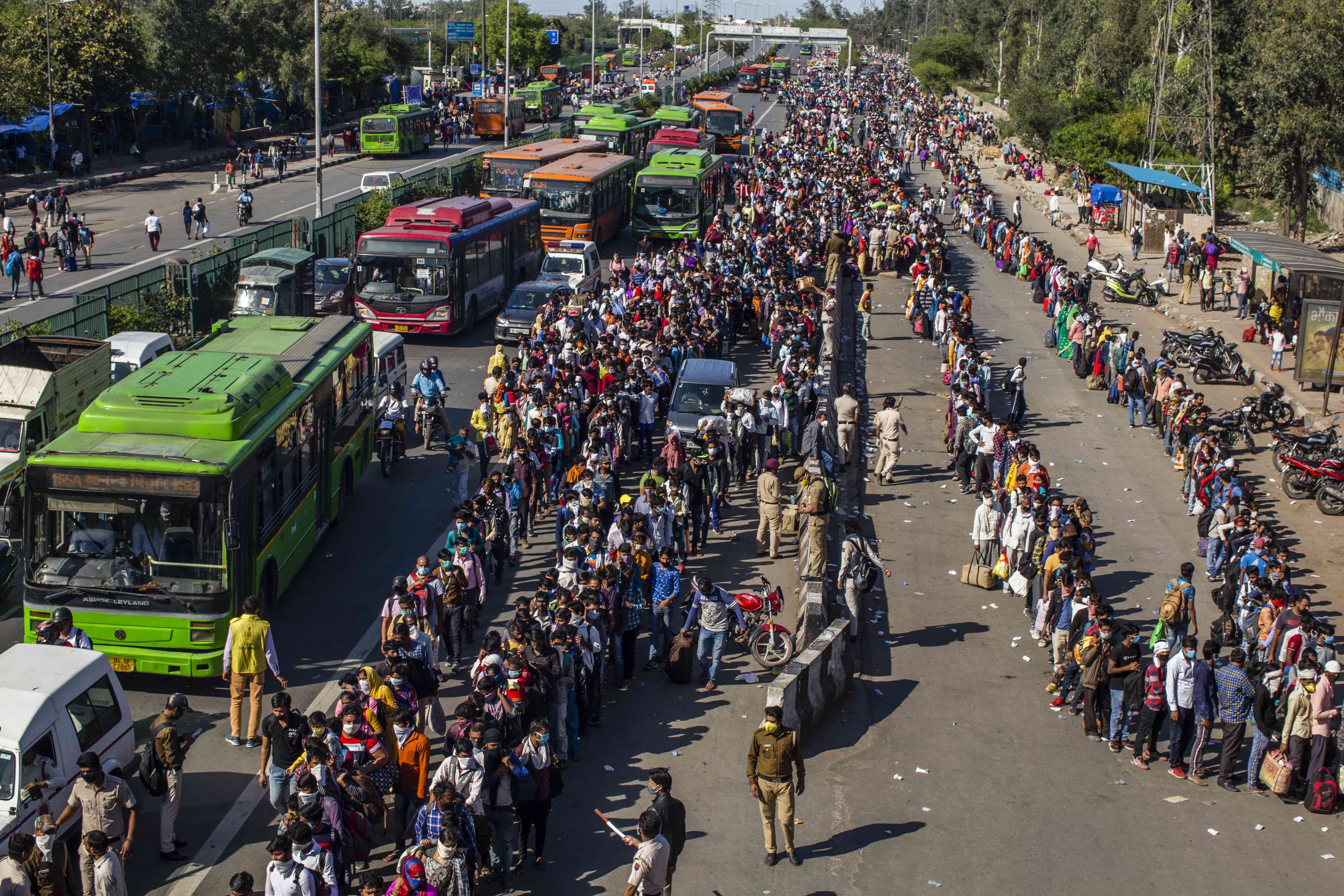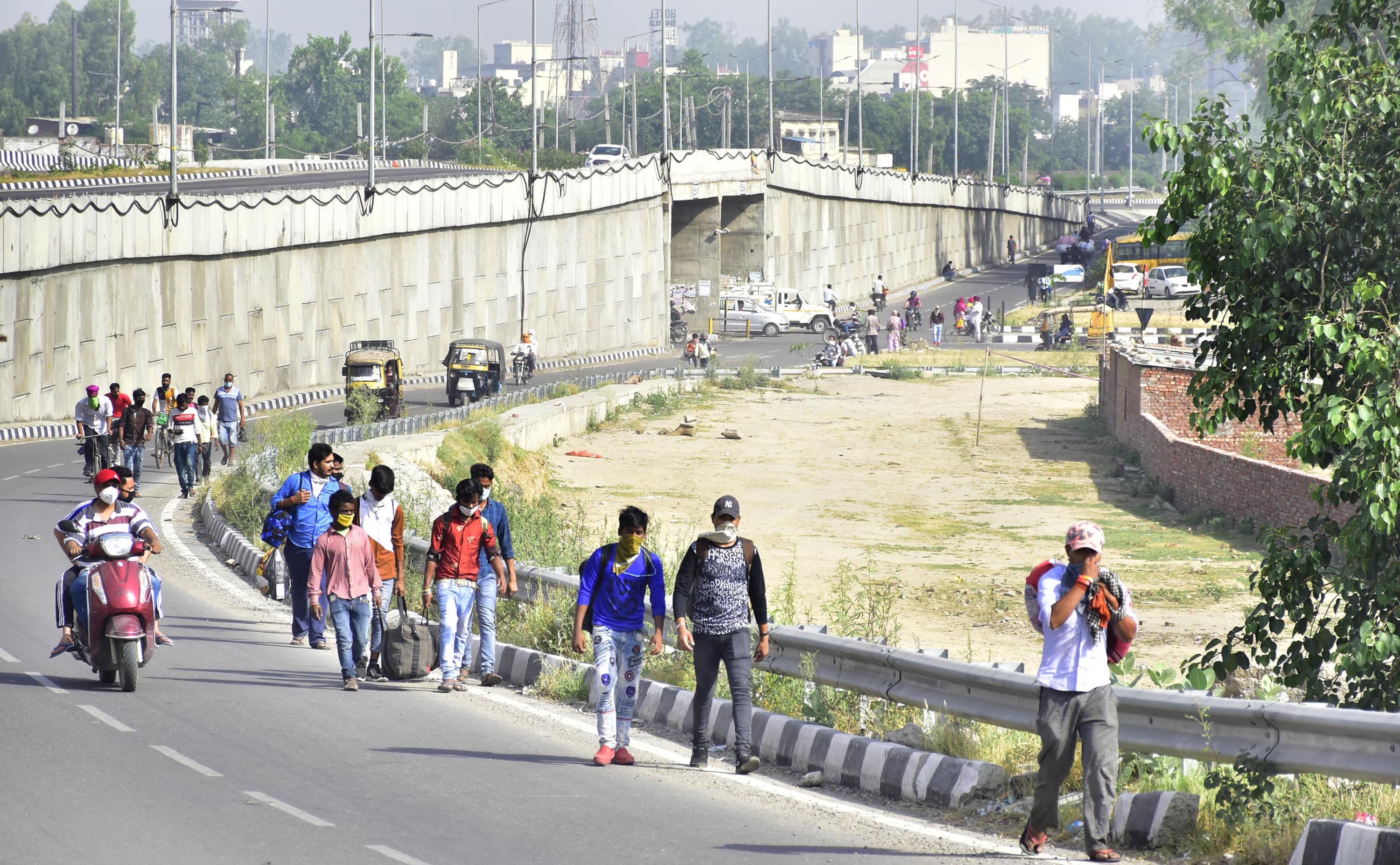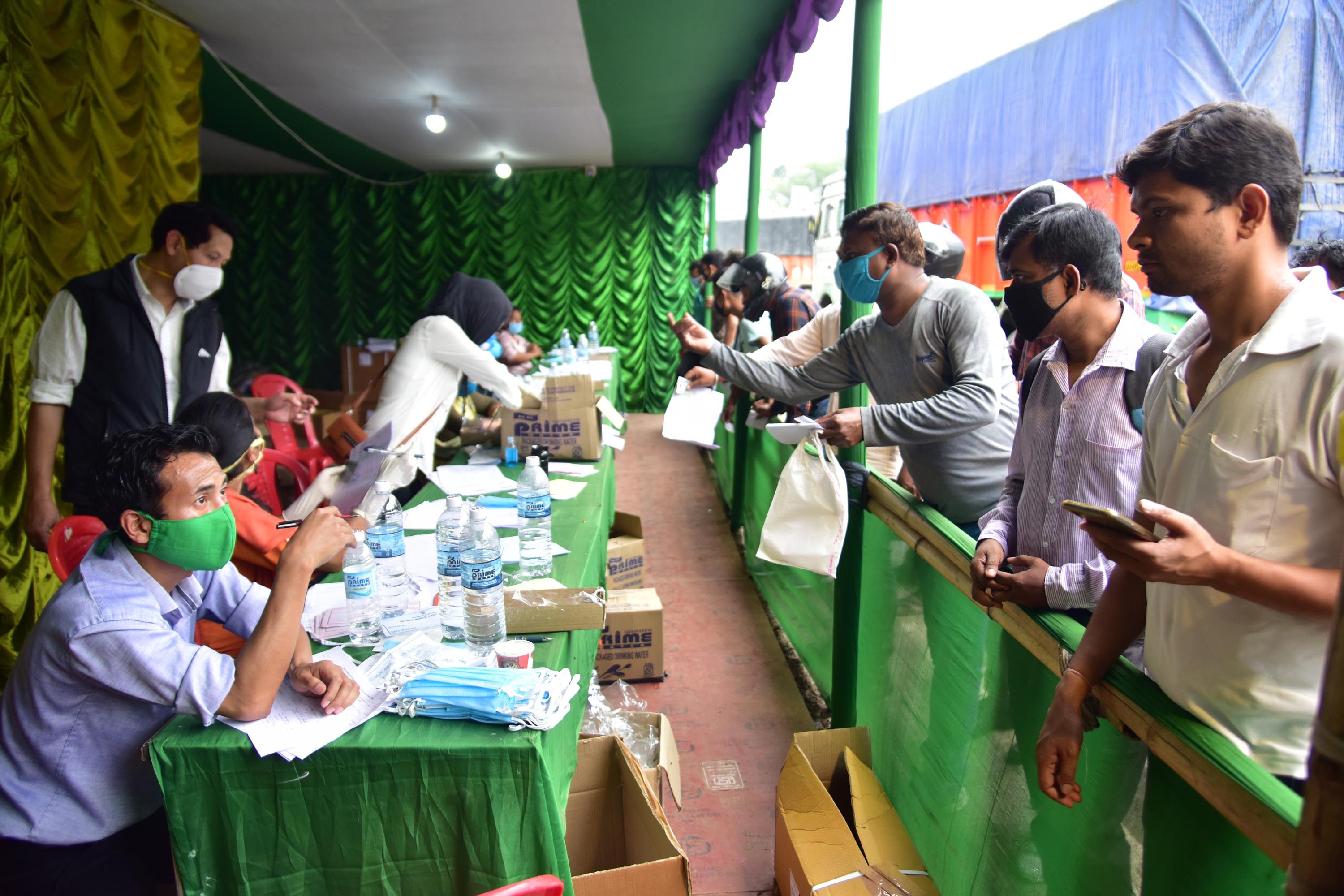
Politics & Society
Securing India’s food supply during COVID-19

As India’s COVID-19 lockdown continues, many migrant workers from the country’s Northeast are unable to return home. But even when they can, they face fear and stigma
Published 28 May 2020
India’s 21-day national lockdown began in late March. Now, in mid-May, that lockdown continues, limiting the movement of the entire 1.3 billion population of India.
Hardest hit by this lockdown are India’s migrant population. National panic and fear have seen a rise in the reports of racist attacks on migrants from Northeast India, including physical abuse captured and shared on social media.

As supply chains are disrupted and essential commodities dwindle, migrants from Northeast India are facing accusations of spreading coronavirus. Food stores have turned them away and in some cities they have been forced to vacate their rented accommodation.
As construction sites, the hospitality sector and factories closed down, millions of migrant workers were left unemployed and homeless.
Public transport systems were suspended and so thousands of migrants from the Northeast were stuck in railway stations and bus terminals. Many more were trapped in cities without money, shelter or food.

Politics & Society
Securing India’s food supply during COVID-19
The impact of this lockdown on the Adivasi and tribal population – the largest tribal population in India live in Northeast and Central India – has been staggering.
For the thousands of migrants who managed to return to their homes in Nagaland, Manipur, Assam and Meghalaya – another crisis has unfolded.
In the last two decades, this region has witnessed a surge of outmigration to metropolitan cities and towns across India. With the exception of a small number of skilled professionals, the majority are young people working in hospitality and retail, including plantations in South India.
As some of these young people return home, state and local authorities have set up a quarantine program across the region to try and monitor and control cases of COVID-19.

One local official from Mon district in Nagaland said they were enforcing the lockdown and recording the number of returning migrants. The administration had recorded 198 migrants across the district.
The state administration was working closely with village councils and local ward committees to monitor the situation on the ground and migrants were being ordered to self-quarantine at home.
Given the magnitude of the quarantine measures, schools, colleges and government guest houses have been requisitioned by the government to serve as emergency accommodation and the community organisations in states like Nagaland, Assam, Manipur, and Mizoram and Meghalaya have worked hard to control the exceptional situation they face.

Politics & Society
India’s local governments tackling COVID-19
But the reality is dire.
There is a shortage of appropriate emergency accommodation for migrants and for those with COVID-19. Medical care is also severely limited.
In Mon district, the only government district hospital does not have an isolation ward or an Intensive Care Unit. It has 53 beds, 50 oxygen cylinders, 13 doctors and 27 nurses to care for 250,260 people.
There are no laboratory facilities; so if anyone is suspected of having the virus, a swab sample is taken from the patient by a medical professional – who should be wearing Personal Protective Equipment (PPE), but officials say PPE isn’t available for health workers yet.
That sample is then put in a medical box and an ambulance carries it to a government laboratory in Dibrugarh, a town 115 kilometres away in the neighbouring state of Assam. This journey takes six hours.

In Meghalaya, the state administration is also working closely with the traditional tribal political institution, the Rangbah Shnong, to monitor the COVID-19 lockdown.These traditional councils in Meghalaya, like many parts of Northeast India, have established community quarantine measures, organised food relief measures and provisions allotted by the state.
Lapdiang Syiem, a city resident who returned from an out-of-state trip, was in her tenth day of self-isolation in Shillong, the capital of Meghalaya state.
When I spoke with her, she said mechanisms were in place and directives were being followed, but there was a fear of infecting vulnerable groups like taxi drivers and people working to supply essential services.

Health & Medicine
Caring for India’s elderly during COVID-19
Syiem said most households were staying indoors, but added that many migrants faced stigma and fear among the community that they would spread COVID-19.
Guwahati is the largest city in Northeast India and it attracts thousands of migrants from both within and outside the region.
In urban centres like Guwahati, residents have been left to carry out relief work and to take care of out-of-state migrants as government and other relief measures are only meant for residents; the problem is that the majority of migrants are left out of any government identification process.
But the national lockdown means many of its seasonal migrant workers are unable to return home.
Across construction sites in Guwahati, contractors have abandoned migrant workers and left them to fend for themselves. Kharguli, a suburb in Eastern Guwahati, is home to many people who work as daily wage earners. Their livelihoods have stopped abruptly.

Residents’ committees, church groups and local municipal ward members have collected money to ensure that around 300 seasonal workers and the poor have dry rations like rice, lentils, oil, potato, tea and sugar. But getting permission to distribute relief to those in need is a challenge.
Police have been strict in enforcing the lockdown to keep people indoors.
A sociologist based in Guwahati, Dr Sanjay Barbora, says the process of getting this kind of permission from the right people to be able to distribute relief is difficult.

Health & Medicine
COVID-19 and containment: A dual burden for India
Previously, Dr Barbora worked with relief operations during Assam’s annual floods. At the time, processes were fairly streamlined as NGOs worked in tandem with the administration.
But currently, finding the point of authority in the local administrative system is a challenge in itself. Dr Barbora notes this issue is typical for local bodies and institutions like councils whose decision-making capacity and powers have been taken away during the crisis.
The lockdown has highlighted how power is now centralised with very little connection to those working on the ground.
But Dr Barbora says the experience of stranded migrants in Gunwahati also highlights the effectiveness of “well-organised people doing welfare work out of practice and goodwill”.
It is perhaps an example that could be used across the country to support those migrant workers in need during these unusual and challenging times.
Banner: Getty Images